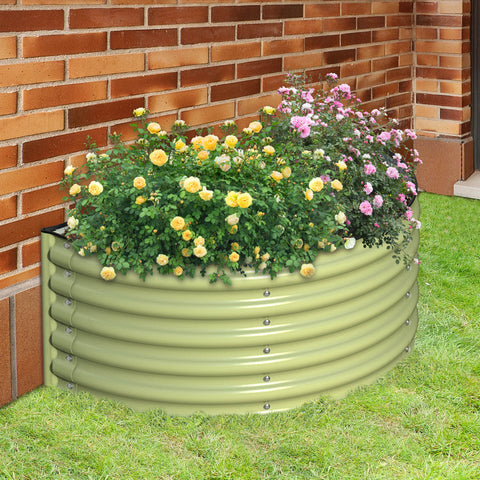Knowledge from Olle Garden Bed:Creating Beautiful Garden Beds: How to Plant Bulbs
Garden enthusiasts know that there's more to fall gardening than just tidying up fallen leaves. It's also the perfect time to lay the groundwork for a stunning spring display by planting bulbs. Whether you're a seasoned gardener or just starting out, creating captivating garden beds is an art that can be mastered. In this guide, we'll delve into expert tips on how to design, prepare, and maintain garden beds that will bloom vibrantly come spring.
Selecting the Perfect Bulbs
Just like a painter chooses their palette, selecting the right bulbs is essential for a successful garden bed. When purchasing bulbs, keep these pointers in mind:
Opt for big bulbs. They'll produce more substantial and more vibrant flowers.
Choose heavy bulbs, as they contain more stored energy to fuel growth.
Inspect bulbs for any blemishes or damage. Opt for unblemished ones, as they are healthier.
Avoid bulbs that are dry, shriveled, or lightweight, as they may not recover.
Stay away from bulbs with soft spots, as these indicate rot.

Planning the Perfect Location
Selecting the right spot for your garden bed is crucial for the well-being of your bulbs. Here's what you need to consider:
Choose a location with full sun. Most spring-blooming bulbs thrive in sunlight. However, ensure the spot doesn't receive excessive water during the summer.
Ensure the soil is well-drained and has a neutral pH. Sandy loam soil is ideal, allowing strong root growth and preventing bulb rot.
Avoid adding bone meal during planting, as it may not be very nutritious and can attract animals that might dig up the bulbs.
Instead, consider applying a granular organic plant food with a 5-10-5 formula to the soil's surface after planting.
Planting Bulbs: The Right Way
Planting bulbs properly is the key to their successful growth. Follow these steps:
Planting Depth: Most bulbs thrive when planted at a depth of 3 times their height. This ensures even temperatures and encourages strong root and flower development.
Spacing Matters: Pay attention to the recommended spacing on the package. Proper spacing ensures healthier plants and reduces overcrowding.
Right Side Up: Plant bulbs with the growing tip facing up and the flat basal plate down. If unsure, plant bulbs on their side; they'll grow in the correct direction.
Timing: Buy bulbs early but plant them once soil temperatures reach around 55°F. Cooler temperatures trigger the bulbs to settle in for winter.
Northern vs. Southern Timing: Northern gardeners (USDA zones 3 to 7) should plant bulbs between September and November. Southern gardeners (USDA zones 8 to 10) should plant in November and December, or consider prechilled bulbs.

Caring for Your Garden Bed
After planting, ensure your garden bed receives proper care:
Watering: Keep the soil moist while bulbs establish roots and bloom. Avoid wetting them while dormant to prevent rot.
Mulching: Use straw, wood chips, or compost to maintain even soil temperatures, especially during fluctuating temperatures.
Tools for Planting: Choose the right tools for efficient planting. Use a square shovel for mass plantings, a soil knife for small bulbs, a bulb planter for quick planting, or a bulb auger for tough soils.
Designing Your Garden Bed
While functionality is key, don't forget the aesthetics. Consider color schemes, bloom times, and plant heights to create a visually appealing arrangement. Layer bulbs with larger ones at the bottom and smaller ones above.
In conclusion, a successful garden bed starts with selecting healthy bulbs and extends to proper planting techniques and ongoing care. By following these expert tips, you can create a garden bed that bursts with vibrant colors come springtime. So, roll up your sleeves and get ready to transform your outdoor space into a breathtaking canvas of nature's beauty.
